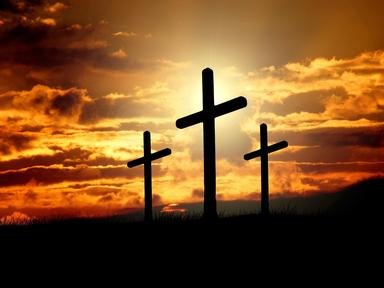Quiz Answer Key and Fun Facts
1. This saint is associated with the image accompanying this question. He is mentioned in the four Gospels and is considered by Roman Catholics to be the first Pope. Who was he?
2. This saint is associated with the image accompanying this question. He and his brother were both Apostles. He is also considered the patron saint of Scotland. Who was he?
3. This saint is associated with the image accompanying this question. He is the national saint of England. He was a Roman soldier in the later third and early fourth century. Perhaps I could have used a picture of the dragon he is said to have killed. Who was he?
4. This saint is associated with the image accompanying this question. He is best known as a foster father, although his work as a carpenter should not be overlooked, since he taught this trade to his foster son. Who was he?
5. This saint is associated with the image accompanying this question. Perhaps it would have been easier if I had an image of Rudolph accompanying this question. The three gold balls are said to represent an anonymous gift he gave to the three daughters of a very poor man. Who was this saint?
6. This saint is associated with the image accompanying this question. Hard to imagine that a politician could also be a saint. This man served the King of England but would not assist the King in gaining a divorce. Who was this saint?
7. This saint is associated with the image accompanying this question. This saint is considered the very first Christian martyr--someone who dies for his or her faith. His death is described in "The Acts of the Apostles". Who was this saint?
8. This saint is associated with the image accompanying this question. I suppose I could have used a crossed-out snake to represent this saint, the patron saint of Ireland. Instead I used this bit of plant associated with the saint that he is said to have used to explain the Trinity. Who was this saint?
9. This saint is associated with the image accompanying this question. This saint was said to be a "twin" and was also said to be "doubting". He was said to have traveled as far as India spreading word of the Gospel. Who was this saint?
10. This saint is associated with image accompanying this question. This is saint is known as the leader of an army. She helped the Dauphin of France become King. She was later burned at the stake. Who was this saint? (Just give her first name, in English.)
Source: Author
bernie73
This quiz was reviewed by FunTrivia editor
looney_tunes before going online.
Any errors found in FunTrivia content are routinely corrected through our feedback system.


